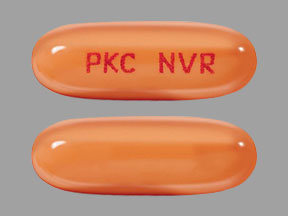Rydapt Side Effects
Generic name: midostaurin
Medically reviewed by Drugs.com. Last updated on Apr 9, 2023.
Note: This document contains side effect information about midostaurin. Some dosage forms listed on this page may not apply to the brand name Rydapt.
Applies to midostaurin: oral capsule liquid filled.
Serious side effects of Rydapt
Along with its needed effects, midostaurin (the active ingredient contained in Rydapt) may cause some unwanted effects. Although not all of these side effects may occur, if they do occur they may need medical attention.
Check with your doctor immediately if any of the following side effects occur while taking midostaurin:
More common
- Black, tarry stools
- bloody urine
- body aches or pain
- bone, joint, or muscle pain
- chest pain or tightness
- cough
- decreased frequency or amount of urine
- dizziness
- ear congestion
- fever or chills
- headache
- increased thirst
- loss of appetite
- loss of voice
- lower back or side pain
- nausea
- painful or difficult urination
- pale skin
- runny or stuffy nose
- sneezing
- sore throat
- stomach pain
- swelling of the face, fingers, or lower legs
- trouble breathing
- ulcers, sores, or white spots in the mouth
- unusual bleeding or bruising
- unusual tiredness or weakness
- vomiting
- weight gain
Incidence not known
- Chills
- general feeling of discomfort or illness
- thickening of bronchial secretions
Other side effects of Rydapt
Some side effects of midostaurin may occur that usually do not need medical attention. These side effects may go away during treatment as your body adjusts to the medicine. Also, your health care professional may be able to tell you about ways to prevent or reduce some of these side effects.
Check with your health care professional if any of the following side effects continue or are bothersome or if you have any questions about them:
More common
- Bloody nose
- blurred vision
- cracked lips
- diarrhea
- difficulty having a bowel movement (stool)
- difficulty with moving
- difficulty with swallowing
- dry mouth
- flushed, dry skin
- fruit-like breath odor
- headache
- increased hunger
- increased sweating
- increased thirst
- increased urination
- muscle stiffness
- small red or purple spots on the skin
- sores, ulcers, or white spots on the lips, tongue, or inside the mouth
- sweating
- trouble sleeping
- unexplained weight loss
For Healthcare Professionals
Applies to midostaurin: oral capsule.
General
Acute Myeloid Leukemia (AML):
-The most common laboratory abnormalities (incidence 10% or more and 2% or more frequent than placebo) were hypocalcemia, increased ALT, and hypernatremia.
-The most frequent adverse reactions (incidence 20% or greater) were febrile neutropenia, nausea, mucositis, vomiting, headache, petechiae, musculoskeletal pain, epistaxis, device-related infection, hyperglycemia, and upper respiratory tract infections.
Systemic Mastocytosis/Mantle Cell Leukemia:
-The most common laboratory abnormalities (incidence 49% or more) were hyperglycemia, lymphopenia, leukopenia, anemia, thrombocytopenia, and neutropenia.
-The most frequent adverse reactions (incidence 20% or greater) were nausea, vomiting, diarrhea, edema, musculoskeletal pain, abdominal pain, fatigue, upper respiratory tract infection, constipation, pyrexia, headache, and dyspnea.[Ref]
Gastrointestinal
Very common (10% or more): Nausea (83%), vomiting (68%), mucositis/stomatitis (66%), diarrhea/gastroenteritis/colitis (54%), increased lipase (37%), abdominal pain (34%), constipation (29%), increased amylase (20%), hemorrhoids (15%), gastrointestinal/hemorrhoidal/duodenal ulcer hemorrhage (14%)
Common (1% to 10%): Dyspepsia, gastritis[Ref]
Hematologic
Very common (10% or more): Febrile neutropenia (83%), lymphopenia (66%), leukopenia (61%), anemia (60%), thrombocytopenia (50%), neutropenia (49%), prolonged activated partial thromboplastin time (13%)[Ref]
Endocrine
Very common (10% or more): Hyperglycemia (80%)[Ref]
Metabolic
Very common (10% or more): Hypocalcemia (74%), hypernatremia (34%), hypoalbuminemia (27%), hypokalemia (25%), hyperkalemia (23%), hypophosphatemia (22%), hypomagnesemia (20%)
Common (1% to 10%): Increased weight, hypercalcemia[Ref]
Hepatic
Very common (10% or more): Increased ALT (71%), increased alkaline phosphate (39%), increased GGT (35%), increased AST (32%), hyperbilirubinemia (29%)[Ref]
Nervous system
Very common (10% or more): Headache (46%), dizziness (13%)
Common (1% to 10%): Tremor, vertigo[Ref]
Other
Very common (10% or more): Edema/peripheral edema (40%), fatigue/asthenia (34%), pyrexia (27%), device-related infection (24%)
Common (1% to 10%): Chills, sepsis (staphylococcal/enterobacter/escherichia), fungal infection (bronchopulmonary aspergillosis, pneumonia fungal, splenic fungal, hepatic candidiasis)[Ref]
Genitourinary
Very common (10% or more): Hyperuricemia (37%), urinary tract infection/cystitis (16%)[Ref]
Dermatologic
Very common (10% or more): Petechiae (36%), rash/maculo-papular rash/erythema multiforme (14%), hyperhidrosis (14%)
Common (1% to 10%): Cellulitis or erysipelas, dry skin, contusion[Ref]
Musculoskeletal
Very common (10% or more): Musculoskeletal/back/bone/extremity pain (35%), arthralgia (19%)[Ref]
Respiratory
Very common (10% or more): Upper respiratory tract infection/nasopharyngitis/sinusitis (30%), epistaxis (28%), dyspnea/bronchospasm/respiratory failure (23%), cough (18%), pleural effusion (13%), pneumonia/lung infection (10%), pneumonitis (11%)
Common (1% to 10%): Bronchitis, oropharyngeal pain, interstitial lung disease, pulmonary edema/congestion[Ref]
Renal
Very common (10% or more): Increased creatinine (25%), renal insufficiency/failure (12%)[Ref]
Psychiatric
Very common (10% or more): Insomnia (12%)
Common (1% to 10%): Disturbance in attention, mental status changes[Ref]
Cardiovascular
Very common (10% or more): Prolonged QT (11%)
Common (1% to 10%): Hypertension, hypotension, pericardial effusion, thrombosis, hematoma, cardiac failure, myocardial infarction or ischemia, angina pectoris[Ref]
Immunologic
Very common (10% or more): Herpes virus infection (10%)[Ref]
Hypersensitivity
Common (1% to 10%): Hypersensitivity reaction, anaphylactic shock[Ref]
Ocular
Common (1% to 10%): Eyelid edema[Ref]
Frequently asked questions
More about Rydapt (midostaurin)
- Check interactions
- Compare alternatives
- Pricing & coupons
- Reviews (2)
- Drug images
- Dosage information
- During pregnancy
- FDA approval history
- Drug class: multikinase inhibitors
- Breastfeeding
- En español
Patient resources
Professional resources
Related treatment guides
References
1. Product Information. Rydapt (midostaurin). Novartis Pharmaceuticals. 2017.
Further information
Always consult your healthcare provider to ensure the information displayed on this page applies to your personal circumstances.
Some side effects may not be reported. You may report them to the FDA.

